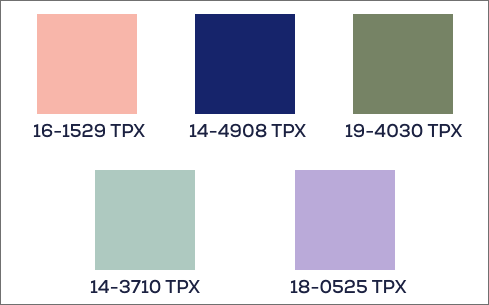Colours are considered very significant in design, fashion, and marketing fields. They make an outstanding perception about the product that we buy, they give a Beautiful decorative look to our home and they make our dressing elegant. But it is very imperative to solve the queries that how the colour came into the black-and-white world and how does the change occur between them over time? In this article, we will explore various colour trends, from artistic movement to technology. Through these colour trends, we can easily understand the cultural and social forces that influence them as well as the art and science of colour choices.
ARTISTIC MOVEMENTS BRING THE COLOUR TREND
Colours have played a very substantial role in the artistic movement as they can carry particular emotions, ideas, and cultural associations. It may be seen that various movements have used these colours for unique purposes in order to achieve their artistic goals. For instance, The Impressionist movement focused on capturing the ephemeral effects of light and frequently utilized brilliant, clean colours to do this. On the other hand, the Expressionist movement used vivid and bright colours for showing sturdy feelings and profound personal experiences. In the pop art movement, bright and saturated colours were used to exhibit the consumer culture of the time. So, colours are observed as a very enhancing tool for the artists to express their ideas and elaborate the particular massage to the spectators.
TECHNOLOGY TRANSFORMS COLOURS TREND
In the modern world, technology is highlighted in every field, and same it is creating a new trend in colours. Through the assistance of technology, designers can make new colours palette and variants more rapidly and precisely. colours -matching software and spectrophotometer help to check the matching and analysis of the colours accurately. So, it is easier to develop a consistent colours variation for the different products and materials. By giving designers new tools and insights that can guide their creative process, technology has the potential to facilitate and accelerate the development and acceptance of colours trends.
FASHION’S ROLE IN SETTING COLOURS TRENDS
New colour trends are also coming due to the fashion industry introducing new colours in clothing, accessories, and other fashion items. Every season, fashion brands come with unique colour palettes and through this new addition of colours, different industries add and make new colours in the design to attract the audience, for example, home décor, graphic design, and beauty. Popular hues in other sectors can often serve as inspiration for fashion trends. In general, the colours that are trendy and trending at any one time are greatly influenced by fashion
MEDIA’S INFLUENCE ON COLOURS TREND
Media is making trends in colours every day through TV shows, movies, and other forms of entertainment to set a mood and convey emotions. It can affect people’s colour tastes more broadly when a certain colour scheme becomes popular in entertainment. Different brands have made their identity through specific colours. Companies can create a colour association with their brand by constantly using a certain colour in their advertising efforts. This association may spread to other industries and become a trend. By positioning particular colours as fashionable, stylish, or desirable in their advertising messaging, marketers can stimulate demand for them.
CULTURAL IDENTITY THROUGH COLOURS
Colours frequently have cultural and symbolic values that might vary over time. Therefore, they can play a key part in cultural transformations. For instance, whereas many Western cultures identify white with innocence and purity, some Eastern cultures view it as the colour of mourning. The significance of particular colours can change as cultures change and develop. Cultural changes can also have an impact on colour trends. As a result, buyers may seek goods or designs that reflect their ideals. For instance, the emergence of social movements and shifting attitudes toward social concerns might have an impact on colour trends.
THE PSYCHOLOGY OF THE COLOURS TRENDS
By offering insights into how colours might affect human emotions and behaviour, psychology can assist in identifying colour trends. Designers and marketers can develop goods and designs that appeal to their target market by knowing the emotional and psychological associations that individuals have with various colours. For instance, a designer may utilise cool colours like blue or green in their product or design if they want to evoke a feeling of tranquillity and relaxation. On the other hand, warm hues like red or orange may be applied if the intention is to generate excitement and energy. The psychological effects of various hues can be used by designers to produce eye-catching and practical colour schemes. The identification of cultural and individual associations with colour that may influence colour trends can also be aided by psychology. Designers and marketers can produce colour schemes that go along with these associations and preferences by researching cultural values, trends, and consumer preferences.
Who Determines colour trends?
Colours are determined by numerous facets including fashion designers, colour forecasting agencies, trend forecasters, and influential companies in the design industry. These organizations frequently examine recent technological, sociological, and cultural advancements to forecast which colour will be popular in the future. In addition, customer preferences and purchasing play a very imperative role in determining colour trends.
CONCLUSION:
As the aforementioned details are very evident that colour trends came from various sources. In conclusion, a multitude of factors, such as fashion and design, popular culture, art and aesthetics, and socioeconomic and cultural changes, can influence colour trends. Colour trends can also be influenced by elements like advancing technology, environmental concerns, and cultural diversity.
